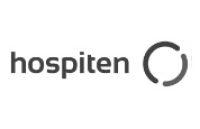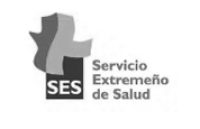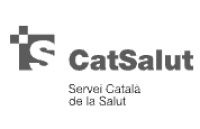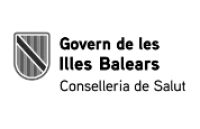SALIVARY CORTISOL ANALYSIS
A validated indicator of the body’s stress response system and hormonal activity.

Cortisol testing provides a precise snapshot of HPA-axis function, guiding diagnosis and treatment across diverse endocrine and systemic disorders.
1. Salivary cortisol: key information on the physiological response to stress.
The hormone regulates essential functions during stress. Its measurement in saliva provides a clear picture of a patient’s neuro-endocrine balance.
2. Cortisol measurement to support endocrine screening
Cortisol analysis supplies relevant information to inform the clinical assessment of disorders arising from cortisol excess or deficiency.
3. Regulation of metabolism
Cortisol participates in the metabolic regulation of carbohydrates, proteins and fats. Its measurement can yield useful data on energy dysregulation and help tailor treatment in conditions such as diabetes or hypertension.
4. Immune function and control of inflammation
Cortisol modulates inflammatory activity and the immune response. Aberrant levels may impair the body’s capacity to control infection or inflammation; measurement therefore offers an objective view of immune status.
5. Circadian rhythm and sleep health.
Cortisol exhibits a diurnal rhythm that shapes sleep, wakefulness and alertness. Assessing its variation throughout the day aids the understanding of circadian disruption and can guide therapeutic intervention.
6. Monitoring treatment and clinical progression
Periodic cortisol testing can detect subtle changes in physiological response. It is a useful tool for personalising treatment and enhancing follow-up in chronic stress.
7. Scientific evidence and research applications
Although not a substitute for clinical trials, salivary cortisol testing is supported by robust evidence for research use. Recent studies underscore its value as a non-invasive method for monitoring physiological responses to stress and therapeutic interventions.
Measurement of other biomarkers relevant to integral health.
Measurement of salivary alpha-amylase (sAA)
Sensitive indicator of autonomic activity and stress response.
Salivary alpha-amylase (sAA) is an enzyme produced by the salivary glands whose release is modulated by the sympathetic nervous system. It has established itself as a reliable and non-invasive biomarker of acute stress, useful especially in research and functional monitoring contexts.
Unlike cortisol, sAA responds more rapidly to stressful stimuli, allowing the assessment of immediate physiological changes linked to the autonomic nervous system. It has also shown usefulness in studies on sympathetic dysfunction, neurological diseases and therapeutic monitoring.
Reference:
Ali N, Nater UM. Salivary Alpha-Amylase as a Biomarker of Stress in Behavioral Medicine. Int J Behav Med. 2020 Jun;27(3):337-342. doi: 10.1007/s12529-019-09843-x. PMID: 31900867; PMCID: PMC7250801.
Salivary Immunoglobulin A (IgA)
Non-invasive indicator of immune status and impact of stress
IgA is an essential antibody in mucosal defense, present in saliva, respiratory tract and gastrointestinal tract. It blocks pathogen adhesion and modulates the inflammatory response.
In research, measuring salivary IgA has been used as a non-invasive tool to assess:
- Immune response to chronic stress
- Oral health and risk of periodontal infections
- Behavioral or environmental factors affecting immunity
* Although not validated as a diagnostic test, its use for clinical and research support is scientifically supported.
Reference:
Nihei Y, Suzuki H, Suzuki Y. Current understanding of IgA antibodies in the pathogenesis of IgA nephropathy. Front Immunol. 2023 Apr 11;14:1165394. doi: 10.3389/fimmu.2023.1165394. PMID: 37114051; PMCID: PMC10126238.
Salivary immunoglobulin G (IgG)
Marker of acquired immunity and support for chronic-disease research
IgG is the most abundant antibody in the human body and plays a key role in immunity to past infections and in autoimmune diseases.
Salivary IgG has been explored as a complementary, non-invasive test for:
- Epidemiological studies of chronic infections.
- Monitoring autoimmune deseases.
- Evaluating responses to immunological treatments.
- Assessing passive immunity in vulnerable populations.
* Although not validated as a diagnostic test, its use for clinical and research support is scientifically supported.
Reference:
Lopez-Jornet P, Zavattaro E, Mozaffari HR, Ramezani M, Sadeghi M. Evaluation of the Salivary Level of Cortisol in Patients with Oral Lichen Planus: A Meta-Analysis. Medicine (Kaunas). 2019 May 27;55(5):213. doi: 10.3390/medicine55050213. PMID: 31137861; PMCID: PMC6571959.
Best sellers

Starter Kit: (2) IgA/Cortisol LFD - 10 tests + reader cube + cube adapter

Kit 25: Cortisol Pack
Most purchased in clinics

Kit 50: Dual Cortisol/Amylase LFD
More purchased in research

























Frequently Asked Questions Cortisol
1. What do I need to take a test?
What do I need to take a test?
To measure biomarkers, you need three essential components:
1. Collector (OFC II): Includes a swab and a buffer.
2. Reader: Device for interpreting the results.
3. Specific LFD: Selected according to the analyte you want to measure.
2. How long does it take to get a reading?
The entire process to obtain a reading takes approximately:
1. Sample collection: 1 minute.
2. Mixing: 1 minute.
3. Implementation and enforcement in LFD:
- Single test: 10 minutes.
- Double test: 15 minutes.
4. Scanning with the reader: 4 seconds.
3. Can I leave the sample before analysis?
Yes, you can leave the sample before testing. Once the swab is in the buffer, it will keep at room temperature for weeks. However, for amylase, it is preferable to keep the sample in the refrigerator until analysis.
4. Can I measure more than one test from the same sample?
Yes, you can measure more than one assay from the same sample. Add two drops to a double LFD and you will get two readings at the same time for both biomarkers. Hay suficiente muestra para realizar aproximadamente 15 pruebas, permitiendo múltiples LFD a partir de una sola toma de muestra. There is enough sample to run approximately 15 tests, allowing multiple LFDs from a single sample draw.
5. Do I need a scanner?
Yes, you will need a scanner. All our assays are quantitative, so the reader will provide you with quantitative values once the LFD has run for the incubation time.
6. The cube display shows NAN, what does it mean?
NAN stands for "Not A Number". This occurs when the measurement value is extremely high or low, indicating that it is outside the detection range of the device.
To determine whether this is a minimum or a maximum, follow these steps:
Visual inspection of the test line(s):
Strong line: If the test line is strong and clearly visible, it indicates that the value is a low minimum.
Faint or non-existent line: If the test line is faint or not visible, it indicates that the value is a high maximum.
Understanding this difference is crucial to correctly interpret the results and take the necessary actions. If you need further help to understand the results, do not hesitate to contact our technical support.
7. How is passive therapy with NESA® Medical Technology recommended?
Here is a detailed guide on how to carry out passive therapy effectively:
Anamnesis Focused on the Autonomic Nervous System:
Begin with a comprehensive history-taking that includes relevant aspects of the patient's autonomic nervous system. This approach will help to customize the treatment to meet specific needs.
Objective assessments:
Perform objective assessments of the autonomic nervous system to facilitate clinical follow-up. These assessments may include measurements of cortisol and amylase, scientifically validated tests, ANS electrocardiograms, and the use of home autonomic assessment devices such as actigraphy before initiating treatment.
Removal of metals:
Ask the patient to remove, as far as possible, any metal on the hands and neck, such as jewellery, necklaces, bracelets, and watches, to avoid interference with the therapy.
Preparation of the laying area:
Clean the areas where the electrodes will be placed (feet, hands, and the area of the directional electrode) using alcohol and cotton wool to ensure optimal conductivity.
Position of the patient:
If on a stretcher, make sure the patient is in the supine position (lying on the back) or sitting comfortably in a good chair. If on a stretcher, use a half-roller or roller to relax the popliteal area.
Relaxing atmosphere:
We recommend covering the patient and dimming the ambient lighting, if possible, to foster a state of deep relaxation during the treatment.
Recommended sections in the FAQs
Autonomic Nervous System Readaptation Treatment Units:
Explore this section to learn how passive therapy using NESA® technology can be integrated into autonomic nervous system retraining programs, providing a comprehensive and personalized approach to treatment.
NESA Clinics concept:
Discover the unique approach of the NESA Clinics concept, where non-invasive neuromodulation is integrated with a multidisciplinary treatment strategy for various conditions, thereby maximizing therapeutic benefits for patients.
By adhering to these recommendations, you can enhance the application of passive therapy using NESA® medical technology, ensuring an effective, comfortable, and highly personalized therapeutic experience for your patients.
8. ERR appears on the Cube screen, why?
The ERR message on the Cube display indicates that there has been an error in the calibration process. This occurs when it takes too long to add the calibration card to the top of the Cube Reader before starting a test.
To avoid this mistake, follow these steps:
Add the calibration card quickly:
When the reader displays "RFID" or "CARD", you must place the RFID calibration card on top of the Cube Reader.
Make sure you do this within 10 seconds. Otherwise, the time will time out and the message ERR will appear on the display.
If this happens, simply remove the card and try again by following these steps carefully. If you need further help or the problem persists, please contact our technical support for additional assistance.
9. My OFC tampon has turned blue after adding the swab, is this a problem?
To avoid this error, follow these steps:My OFC tampon turned blue after I added the swab, is this a problem?
No, it is not a problem. The blue colour you see comes from the volume adequacy indicator on the OFC stem. This dye is completely harmless to both the sample and the LFD.
It is important to remember that:
Blue dye is safe: it does not affect the quality and integrity of the sample or the analytical process.
The scanner only looks for red: during the analysis, the reader is programmed to detect red, so the presence of blue dye does not interfere with the results.
Therefore, you do not need to worry if the buffer turns blue, as this will not impact the process or the accuracy of your readings. If you have any further questions or require additional assistance, please do not hesitate to contact our support team.
10. Common SOMA CUBE errors
ERR" SCREEN
The device could not read the information on the RFID card.
Solution:
Press the button briefly (<1 sec.). The display will show 'ON'.
Continue with point 9a or 9b in the instructions above.
If the error occurs several times, contact your dealer directly.
DATE" DISPLAY
The device could not find a control line, or the signal from the control line is too weak. The most common cause is insufficient sample applied to the LFD foil from the OFC buffer, or the test has not been run correctly. This can occur if there is a large air bubble in one of the two drops or if only one drop was added to the LFD.
Solution:
Check that the LFD is correctly positioned under the bucket (section: measurement procedure, item 8).
Then press briefly (<1 sec.), the device will display "ON".
Repeat step 9a or 9b of the above instructions.
If the error persists, select a new LFD film and repeat the measurement procedure.
11. Cortisol and amylase as a biomarker for stress monitoring.
Cortisol and amylase as a biomarker for stress monitoring.
Research shows that there are two distinct systems involved in the stress response in humans and other animals. The activity of both systems can be measured through various biomarkers in saliva, such as cortisol and amylase.
Cortisol measurement
The classic method of characterising a stress response is to measure cortisol levels, which increase due to a series of changes in the hypothalamic-pituitary-adrenal (HPA) axis. However, research has shown that this system can be relatively slow to respond to stress, with a latency of approximately 10-15 minutes.
Speed of physiological response
Cortisol and alpha-amylase: interpretation, timing and recommendations
Physiological response speed
Salivary alpha-amylase (sAA) responds more rapidly to acute stress than cortisol. Both biomarkers are linked to sympathetic nervous system (SNS) activity.
Chronic stress, associated with elevated cortisol levels, can lead to immunosuppression, so its regular monitoring provides relevant clinical information.
Diurnal monitoring (circadian profile)
Common in corporate, wellness or clinical practice environments.
It is recommended to take 5 samples throughout the day to observe the natural cortisol pattern of the same subject:
- Upon awakening
- 30 minutes after awakening
- Noon
- Around 5:00 p.m.
- Before going to bed
This profile makes it possible to detect hormonal disruptions and tailor personalized interventions.
Spot or research measurement
In clinical studies or recovery processes, measurement can be performed:
- Before and after an intervention or treatment
- On a weekly basis, always keeping the same timetable per subject
This makes it possible to assess physiological evolution more reliably.
Key considerations for interpretation
- Cortisol usually peaks between 6:00 and 8:00 a.m., with its lowest levels around midnight.
- Alpha-amylase, on the other hand, shows higher levels in the evening and lower levels in the morning.
Therefore, it is essential to collect samples at the same time of day for each individual, avoiding comparisons between different times that may distort the results.
What is considered "normal"?
There are no single universal values. Results may vary:
- Among different kits and laboratories
- Even using the same kit in different conditions
It is recommended to establish an individual profile for each subject and to analyze the relative variations between your own samples over time.
Reference:
Chojnowska S, Ptaszyńska-Sarosiek I, Kępka A, Knaś M, Waszkiewicz N. Salivary Biomarkers of Stress, Anxiety and Depression. J Clin Med. 2021 Feb 1;10(3):517. doi: 10.3390/jcm10030517. PMID: 33535653; PMCID: PMC7867141.
12. Before you start
Read the manual
Before first use, it is crucial to read the instruction manual carefully. The SOMA Cube is designed exclusively for use in research or for recording the progress of subjects or patients. To ensure optimal performance, it should be used on a horizontal surface. During measurement, the device must not be moved or exposed to bright light, such as sunlight. It is important to note that the device must not be opened (except for the battery compartment), otherwise the warranty will be invalidated.
Batteries
The SOMA Cube is powered by 3 CR2032 lithium batteries. These replacement batteries can be purchased from a wide range of retailers. The SOMA Cube is supplied with 3 batteries in a separate blister pack, which must be inserted into the device for proper operation.
When inserting the batteries, it is important to avoid contact with grease from the fingers, as such contamination can cause rapid discharge and reduce the life of the batteries. Therefore, the use of gloves or plastic tweezers is recommended. If the device does not turn on after inserting new batteries, check the polarity of the batteries and clean them with a dry cloth.
Durability
The SOMA Cube device has no expiry date, which guarantees its long-term use. However, it is important to note the following expiry dates for the associated components:
OFC collectors: 24 months
Buffer: 18 months
LFD film: 12 months
Be sure to use these components within their shelf life for accurate and reliable results.
13. Why buy dual tests, such as cortisol/amylase or IgG/IgA?
Purchasing dual assays, such as cortisol/amylase or IgG/IgA, offers several significant advantages for both research and clinical settings:
Efficiency in simultaneous registration: Dual assays allow multiple biomarkers to be recorded simultaneously, which streamlines the measurement process. This is especially beneficial in studies where several biological responses need to be assessed at the same time.
Measurements in the same time slot: They facilitate measurements within the same time window, ensuring that comparisons between different biomarkers are more accurate and reliable.
Agility in the process: By combining multiple analyses into a single sample, the time and resources required to perform separate tests are reduced. This not only speeds up results but also minimises the inconvenience to subjects or patients by reducing the number of sample collections required.
In summary, dual testing provides a faster and more efficient way to obtain critical data for research and clinical evaluation, improving the accuracy and convenience of the measurement process.
14. Materials included for sample collection
Materials included for sample collection
The pack or box includes a SOMA Cube and several test kits. Each LFD test kit contains:
- SOMA OFC Collector
- SOMA OFC Buffer
- LFD Foil
- SOMA OFC Sponge or Collector
The oral fluid collector is composed of a specially formulated synthetic material, similar to a sponge. This sponge is made of a polymer bonded to a plastic tube containing a volume adequacy indicator, which changes colour when the volume is completed. The sponge is designed to collect 0.5 ml of oral fluid.
SOMA OFC or Buffer
Bottle The SOMA OFC bottle contains a buffer solution, composed of sodium phosphate, salts, detergents and preservatives. This buffer has key properties that facilitate the collection of oral fluids for research and patient evaluation. Once the sponge is placed in the buffer, the sample remains stable at 37°C for three weeks. For prolonged storage, it is recommended to keep the buffer in a refrigerator (weeks) or freezer (months).
Important: Do not ingest the buffer.
LFD SOMA LFD FILM
The SOMA LFD foil is the component that will be used for sample incubation and subsequent measurement with the SOMA LFD Reader Cube. As the LFD foil can be affected by moisture, it is important to check that there has been no colour change in the silica gel sachet (silica gel), which is also packed inside each foil bag together with the LFD. If the silica gel has changed colour (from orange to green), the LFD is unlikely to be suitable for use and should be discarded.
All SOMA LFD sheets have coloured test lines corresponding to the type of LFD, which makes it easy to differentiate between them when they are out of their packaging.
SOMA LFD READER CUBE or SOMA CUBE The pack includes the SOMA LFD READER CUBE. This cube-shaped device is the cortisol and amylase meter, which runs the analysis on the LFD film.
A plastic holder is included where the LFD foil is placed for measurement. The SOMA LFD CUBE is an electronic device that allows timed measurement, which requires a set incubation of the sample for 10 minutes. At the end of the incubation period, the CUBE starts the measurement and displays the result.
Security Notes:
To ensure correct and safe use of the equipment, please observe the following recommendations:
• Single use of the oral fluid collector: The oral fluid collector is designed for single use only. Do not reuse the collector to avoid cross-contamination and to ensure accurate results.
• Do not chew or suck on the collector: Avoid chewing or sucking on the oral fluid collector, as this may damage the collector and affect the quality of the sample.
• Do not place the collector back in the mouth after contact with the buffer: Once the collector has been in the collection solution or buffer, do not place it back in the mouth. This is important to prevent accidental ingestion of the buffer and to maintain the integrity of the sample.
15. Sample collection procedure
Samples can be quickly and easily collected using the collector and analysed within minutes of collection using the SOMA LFD Cube Reader. Both the collector, Buffer and LFD sheet are used as a stand-alone collection device per person.
- 1. Remove the SOMA OFC COLLECTOR from the bag.
- 2. Place the COLLECTOR in the mouth, on top of the tongue and close the mouth, drawing the accumulated saliva into the COLLECTOR (do not suck it!). This method ensures reduced variability due to the secretion of IgA at different rates from various salivary glands distributed throughout the mouth.
- 3. Continue collecting until the volume sufficiency indicator has turned blue (visible on the plastic tube holding the collector). This will normally take 20-50 seconds for most people, but may take several minutes if you are dehydrated or the flow rate is very low. In these rare cases, be patient and wait for the colour change.
- 4. Once the oral fluid has been collected, it should be placed in the Buffer bottle (unscrew the larger cap first), holding the plastic tube and inserting the collector into the bottle, in the direction shown below. Be careful not to spill any drops from the bottle.
- 5. Replace the top of the Buffer bottle tightly and secure the closure.
- 6. The bottle should then be mixed for a period of at least two minutes. This should be done in a rhythmic up and down or back and forth motion. Mixing is important to allow complete extraction of the analysis. Do not shake too vigorously.
- 7. Next, remove the LFD foil from its pouch by tearing the notches on both sides. The control line will appear on the film itself as an orange/red line that is pre-defined before any analysis is performed.
- 8. Hold the Buffer bottle perpendicular to the surface where the LFD is at rest (for good repeatable performance, it should be on a flat surface). Place the Buffer in the circled area on the LFD film and deposit 2 to 3 drops. In a few seconds, the red coloured liquid will start to appear in the rectangular test window of the foil and run. You will notice that the original coloured dyes will be washed out of the samples. In the unlikely event that the red colour does not appear within 90 seconds, add one more drop. You should start timing the test from when the reddish colour appears in the rectangular test window (exactly 15 minutes timed).
You will notice that within the test window there is the formation of three red lines, one control (C) and two test lines (T). Scanning Cortisol LFD before or after 15 minutes will add variability to your readings, so it is important to be consistent and have the expertise to read at exactly 15 minutes.
- 9. Basic measurement (recommended): Once the 15 minutes have elapsed, we proceed to read the results with the LFD Reader Cube or SOMA Cube. The foil should be placed in the appropriate space on the plastic holder provided, which indicates the correct direction of the foil. Ensure that the LFD and the bottom of the SOMA Cube are aligned and on a flat surface. And the basic operation of the SOMA Cube is as follows:
1. When the device is switched off, the screen is blank.
2. To switch on the device, press the button briefly for less than 1 second.
3. After activation, an audible alarm sounds and the display shows "ON".
4. Press the button successively until you reach the "RUN" option (shown on the display).
5. After a few seconds, another beep sounds and the result is displayed, with "C" followed by the cortisol value and "T" for alpha-amylase.
6. Please note that re-measuring the same process on the same film already tested may show variability in the results. It is therefore recommended to record the data.
7. This option is recommended for its simplicity and speed, unless you are conducting a study or research with a large sample that requires the storage of large amounts of data. However, the types of samples with recording are detailed below.
RFID measurement: There is another form of measurement where data can be stored on the RFID card included in the pack. After the foil incubation time (15 minutes), place the foil in its space in the plastic holder and press the SOMA Cube button for more than 1 second. The display will show "RFID". Each timer measurement can be stopped by pressing the button during the measurement.
1. Place the batch-specific RFID card on top of the SOMA Cube reader, making sure that the batch number shown on the RFID card is exactly the same as the batch ID for the LFDs you are measuring.
After successful wireless transmission of the data, an audible signal is heard and the display shows "TEST". The test must be placed in the cavity of the plastic holder, as explained in the basic option (point 9). Ensure that the LFD and the bottom of the SOMA Cube are aligned and on a flat surface.
2. Start the measurement by briefly pressing the button. The device measures and the display shows "RUN". After a few seconds, an audible alarm sounds and the result is displayed.
3. Storage of test results in the SOMA CUBE itself (If storage is not required, proceed to point 4). If the button is pressed for more than 1 second, the measurement results are stored. An audible alarm appears and the display shows "SAVE". The reader has an internal memory to store more than 100 readings. If the internal memory is full and a new result is to be saved, the reader will overwrite the first saved result. Each new result saved will overwrite the results in chronological order.
Once the result is stored or recorded, press the button again to start the next measurement. The display will return to "ON", as when the SOMA Cube was turned on. Thereafter, continue with the instructions from point 2.
4. If result storage is not required, press the button briefly for less than 1 second to not store the result. ON" will appear on the display; continue with step 9 if you need to take another measurement of another sample.
- 5. If the device is switched on and not used for about 50 seconds, the SOMA Cube switches off automatically to save battery power. Please note that there is no active function to switch off the SOMA Cube.
ATTENTION!!! For RFID measurement, it is important that the SOMA Cube ID matches the batch ID. This number is shown on the label of the foil bag of the LFD; this is because the calibration characteristics match and are programmed into the reader for each batch of foil produced. If the batch is changed or the ID does not match, it cannot be recorded with the RFID card supplied with your LFD test kits. If you are using LFDs from two different batches in the same test session, be sure to use the correct RFID card for your LFDs.
16. Considerations with the SOMA Cube device?
These are the most common errors that can appear in SOMA CUBE:
Date/Time settings:
Set the SOMA Cube to the "ON" position following step 9. Press the button twice briefly (<1 sec.). The year, time and date will appear on the display. Press the button for about 1 second; a flashing display will appear with the first time specification and then the year. By briefly (<1 sec.) pressing the button repeatedly, the displayed value can be changed. When the desired value (e.g. year) is reached, press the button longer (>1 sec.); the required year will be stored and the following information will be displayed. Repeat these steps to successively set year, month, day, hour and minute. Press the button once more, the reader will display "ON" and is ready for use. Repeat this process with each battery change.
Data Transfer:
The SOMA Cube has the ability to transfer data to a PC or laptop. This is done using the unique USB cable and the Cube Data Reader software.
eturn of the Product:
In case of any defects, it may be necessary to return the device to the distributor or manufacturer. As the device may have been contaminated by residues or substances, the surface must be disinfected before shipping. Use a suitable cleaning disinfectant. The disinfectant must be of high quality and must not damage the device material (e.g. Mikrozid® AF or similar liquid products). Disinfection must be documented.
Caution: Please note that a returned device will not be accepted without proof of disinfection and cleaning of the plastic holder.
The SOMA Cube is maintenance-free. Before each measurement, it should be checked for impurities, liquids and residues. For cleaning, we recommend a cloth together with a cleaning liquid, e.g. eyeglass cleaner.
Scientific basis and references
See studies that support the use of salivary biomarkers such as cortisol, IgA or alpha-amylase in clinical and research settings.
How to collect a saliva sample
Elevate your assessments with saliva tests
NESA WORLD kits deliver rapid, lab-grade data for clinical care, wellness or research. Let us advise you and build a custom plan.
Talk to an expert
"*" indicates required fields